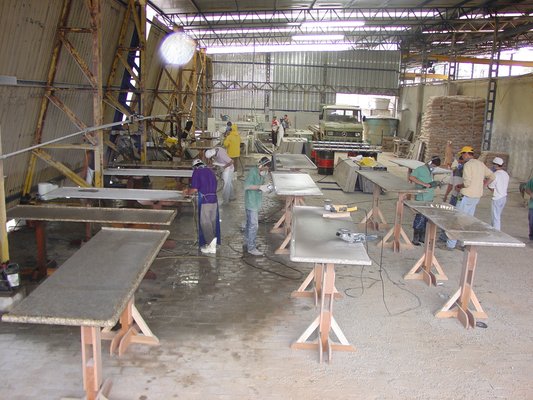Granite slabs are one of the oldest and most widely-used building materials in history. Wherever it is available, people have quarried it to make everything from small, attractive sculptures to towering buildings. It is used to make industrial work surfaces and decorative granite slab façades, and is prized as the best material for Olympic-quality curling stones. Many natural wonders are formed from granite without human assistance, such as the unmistakeable Half-Dome Mountain in Yosemite National Park and Rio de Janeiro’s famous Sugarloaf Mountain. So what leads a stone abundant enough to create a mountain to be one of the most prized materials for building and decoration? There are several reasons. Here are some things you might not know about granite.
Granite Comes In Many Different Colours
Many people think of granite as a black and white stone. This is very often true, since one if its most common appearances is of a white or very light grey stone with bright, reflective black flecks. This is the colouration that we see most often on well-known granite mountains. However, granite isn’t a pure mineral—it’s made up of different types of mineral and as a result it can be many different colours. Granite slabs come in a rainbow of colours ranging from the tastefully subdued to the gorgeously dramatic. Bright reds, calming greens and earthy browns are all excellent choices. These colours can come in a variety of patterns as well. Although the uniformly flecked pattern is very popular, granite can come in streaked, splotched and swirled patterns, among others.
Granite Can Hold Different Textures
If you’ve seen granite used in building or home decorating, you’ve most likely seen polished granite slabs. Polishing granite is a popular technique because it holds a beautiful shine for many years. However, granite slabs can be produced with several different textures to achieve different effects. For exterior decorating, granite can be left with its natural rough texture. This is a much used method with flecked granite as it allows the natural mica flecks to sparkle. People who want a smooth surface to their stone, but without the extra brightness of a polish, may prefer honed granite. Honing creates a smooth, matte surface that is excellent for countertops. Granite can also be given a rich, attractive texture by subjecting it to intense heat which causes the surface to burst. This process is called flaming and it creates a unique look for walls, fireplaces and other decorative surfaces.
Granite Is Extremely Durable
Some people believe that granite, because it contains different minerals, might fall apart if subjected to rough use. The fact is that granite isn’t formed by minerals being stuck together by chance. It’s created when minerals are melted into magma and subjected to intense geological pressure. The minerals are fused together by forces no human invention can match. The result is one of the hardest stones on the planet—only diamonds and a few other pure gemstones are harder! This is one of the main reasons granite slabs are a prized building material. Granite is used as a work surface for industrial procedures that require tremendous force because it does not warp or break under the strain. It is a nearly perfect choice for kitchen countertops because it will not scratch or chip, allowing it to remain not only attractive but sanitary as well. When used outdoors, granite does weather, but often becomes more beautiful as its colours are bleached into a lovely contrast by sun and wind. Centuries-old granite buildings are often as beautiful today as the day they were built.
Granite Can Be Used In Many Different Ways
Even if you’ve never considered using granite in your home, garden or office, chances are you’ve seen it around more than you think. It has uses in professional places as well as cosy home settings. It can be seen as part of a stately monument or in a small private garden. Raw granite pieces and polished granite slabs have endless potential to improve a building or an outdoor space. Thanks to its durability and enduring beauty, it is a timeless choice in many countries and for many styles. If you’re considering a building project, look around at some of your favorite styles and see some of the hundreds of creative and practical ways that granite can be used.
This article was written by Katherine Delaney, an interior decorator who specializes in writing articles about granite slabs, which are one of the oldest and most widely used building materials in history.
